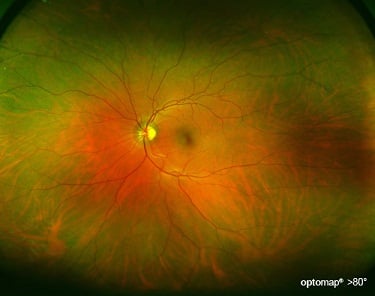Quick and Efficient Ways to Catch AMD
As the front line of defense in protecting your patients from vision loss, it’s becoming more important than ever to detect Age-Related Macular Degeneration (AMD) as soon as possible. With an aging population and AMD already the leading cause of vision loss in the elderly, beginning treatment at the onset of the disease or soon after will help your patients maintain their vision and quality of life longer. Since patients may not experience early symptoms, you’re their best chance at early eye disease detection.

Source: optomap
Family history and pointed lifestyle questions can help highlight patients that may be at risk of developing AMD. If your patient has an immediate blood relative, for example, that has AMD, there’s an increase chance that they might develop the condition as well. Also at greater risk are those who smoke, partake of a high glycemic index diet and those who are overweight or obese. Age of course, is an obvious risk factor. Monitoring patients that match any or all of these categories and noting changes to their eye structure can be tantamount to early eye disease detection.
Another important consideration in eye disease detection is the technology you employ to perform clinical exams. optomap ultra-widefield retinal imaging from Optos images more than an 80 percent of the retina. This ultra-widefield retinal imaging equipment provides the ability for comparison during follow-up appointments, and the image clarity may help you diagnose retinal pathologies earlier.
To provide early retinal disease detection and possibly position your practice as an AMD center of excellence, we invite you to review Optos’ ultra-widefield imaging devices. To learn about partnering with us to help your practice benefit from Optos technology, please contact us today.